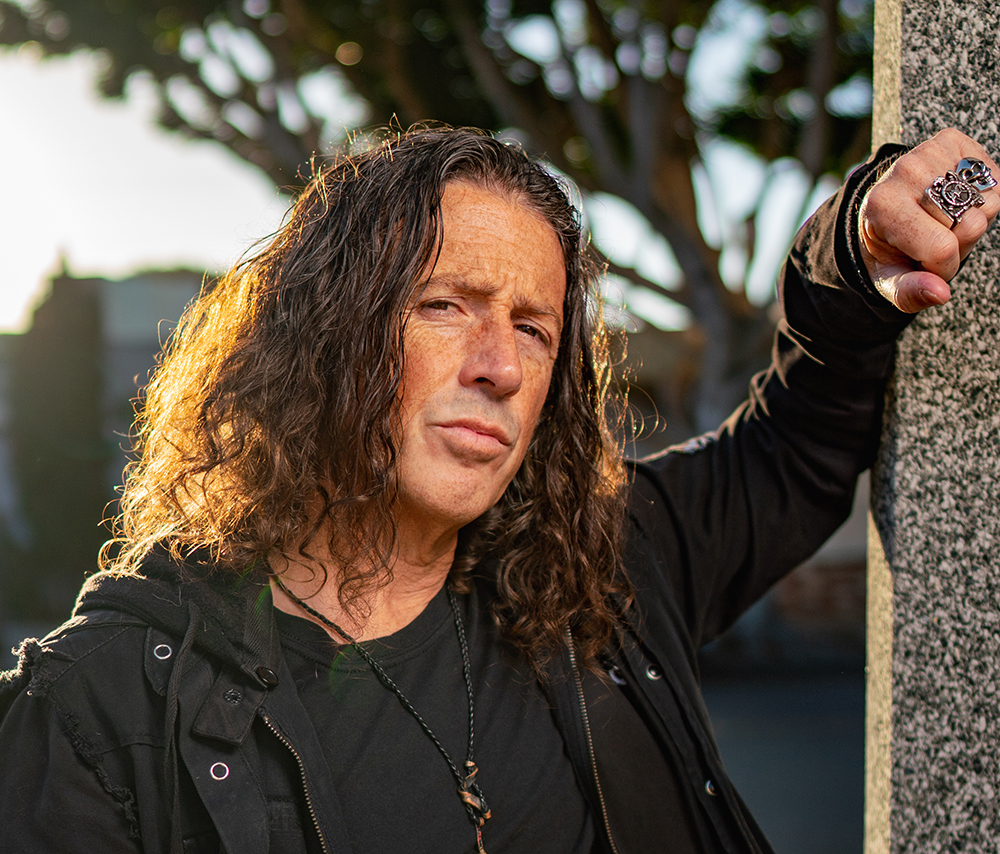10 things you never knew about Slayer's Seasons In The Abyss
From playing the songs wrong live to f**k-ups that made the album even better, here are all the eye-opening facts you need to know about Slayer's fifth album

Released on October 9, 1990, Slayer’s Seasons In The Abyss remains one of metal’s enduring hallmarks. For every punter who rates Reign In Blood as Slayer’s finest moment, you’re likely to find another who’d back Seasons... Featuring the classic lineup of vocalist/bassist Tom Araya, guitarists Kerry King and Jeff Hanneman and drummer Dave Lombardo, Slayer’s fifth full-length outing completed the unholiest of trinities, distilling the flamethrowing hostility of Reign In Blood into the creeping malevolence of South Of Heaven. Thematically, the band resumed their meditations on a bleak and merciless world with ten pulverising tracks about violence (Hallowed Point, Expendable Youth, War Ensemble), serial killers (Dead Skin Mask), state-sponsored corruption (Blood Red) and the paranormal (Spirit In Black and the Stephen King-inspired Seasons In The Abyss).
At the time, some diehards decried the slowed-down tempo of the title track as evidence of selling out, while others felt that Seasons... caught the L.A. metallers in a creative rut. But these spicy takes have withered and died over the passage of time. In fact, Seasons... saw Slayer tapping into new levels of ambition and musicianship that they had not previously attempted. And the results were magnificent. As Amon Amarth’s Johan Hegg told us in 2020, “I think that this album didn’t so much impact the scene as cement them as the ultimate thrash band.”
Here, then, are ten details that inform the story of one of Slayer’s crowning achievements.

1. By the time the album was complete, Kerry King had had quite enough of Rick Rubin
American Recording’s legendary label boss, Rick Rubin, had produced both Reign In Blood and South Of Heaven and so he was a natural choice for Seasons... However, 1990 was a busy year for Rubin, whose 1990 producer credits also include releases by Danzig, Ghetto Boys, Trouble, Wolfsbane and comedian Andrew “Dice” Clay. Looking back on Seasons... years later, King said, “it's probably the last record Rubin had any real influence on — he eventually became the kind of producer who shows up for drums, vocals and mixing, and that's it.” Slayer did, however, remain with American Recordings until 2015, when they announced that Repentless, their eleventh studio album, would be released on Nuclear Blast.
2. Dave Lombardo left the band after this album because of family reasons...or a lack of interest...depending on when you asked Dave Lombardo
Lombardo’s jaw-dropping precision behind the drumkit set the backbone around which all of Slayer’s frenzied riffing was built. His work on Seasons... stands shoulder-to-shoulder with anything he’s ever done, as much for its creativity as for its unrelenting power, but he stepped away from Slayer just two years later. “I left the band in ’92 to be at home for the birth of my son, period,” he said in 2014. However, years earlier, in 2008, the drummer told Decibel magazine that it was while travelling around Egypt, visiting the pyramids and riding horses through the sands of Cairo that he realised his heart was no longer in it. “My wife went with me,” he said, “and we rode horses through that area. It was magical — awe-inspiring, really. But around that time, I was becoming uninterested. It wasn't a money issue that time — it was just a lack of interest.” Lombardo returned for a second stint with Slayer, beginning with 2006’s Christ Illusion, until being ousted in 2013.
3. The vocals on Temptation were a mistake.
For the album’s eighth track, Araya recorded his vocals in the style that he felt best suited the song. King had a different idea, however, so Araya recorded them a second time with King’s suggestions. Summoning Rubin as arbiter for which take should be used on the album, they accidentally played both tracks simultaneously — and it sounded great! As King recalls, “He just turned it on, and both vocals came out. He listened to it, gave a nod, and goes, 'Cool.' We all agreed to keep it."
4. It was Tom’s first meaningful collaboration as a songwriter.
On the band’s previous releases, guitarists King and Hanneman had guided Slayer’s creative vision but on Seasons.., Araya stepped up as a primary contributor. “Seasons was the last time we all sat down and worked on a record together as opposed to coming in with songs already done,” Araya said in a 2008 interview. “It was the last album where I really felt like I was part of the songwriting process rather than being handed songs that were already complete.” Araya ended up penning four of the album’s ten tracks and he co-wrote two more with Hanneman. Not coincidentally, Hanneman and Araya were roommates during the recording of the album.
Sign up below to get the latest from Metal Hammer, plus exclusive special offers, direct to your inbox!
5. They invited one of their friends to voice the creepy kid in Dead Skin Mask
Slayer invited their friend Matt Polish to contribute vocals on Dead Skin Mask — the track inspired by the book, Deviant: The Shocking True Story Of Ed Gein, The Original Psycho. At 4:13, we hear the eerie protestations of a small child as Araya sings Listen to the hallowed screams... Araya asked Polish to pretend to be a little kid who was told to stop playing and to come straight home. They then pitch-shifted his voice until it was high enough to sound like a child, albeit one who is about to become serial killer Ed Gein’s next victim. Utterly chilling. Bonus factoid: this was Hanneman’s favourite song on the album. In his own words, “the riff is just haunting.”
6. Slayer became huge Alice In Chains fans on the supporting tour
To support the album, Slayer joined forces with Megadeth for the Clash of the Titans tour. Testament and Suicidal Tendencies opened on the European leg in September and Anthrax and Alice in Chains supported in the US the next spring. Discussing the tour in 2008, King said, “I was a big Alice fan — I think Layne [Staley] had one of the most extraordinary voices of our time. I wasn't into them at first, because all I knew was Man in the Box, but after I saw them a few times, I dug it.” Araya added, “Alice in Chains ended up being the surprise on that bill — they were a really good band. Live, they were amazing, so it was no surprise they went to the top.” For Araya, the tour resulted in a friendship with AIC’s Jerry Cantrell and a guest vocal appearance on Iron Gland, from AIC’s 1992 classic, Dirt.
7. Upon release, Seasons... outperformed both Reign In Blood and South Of Heaven
As Slayer’s popularity increased, so did their commercial exposure and popular appeal. But when they dropped Seasons... they were very much still an underground band with zero radio play. Regardless, it would become Slayer’s first album to crack the US Top 40 (at number 40), and it reached 18 in the UK. It was also their third gold album, attaining that certification quicker than either of its two predecessors.
8. The title track was Slayer’s very first music video
Though escaping the clutches of music videos for years, the band finally cracked and released a video for both the title track and for War Ensemble, both of which would go on to enjoy heavy rotation on MTV’s flagship metal show, Headbanger’s Ball.
9. Kerry played the Dead Skin Mask solo wrong for eight years
Time’s a bitch. Talking to SF Weekly in 2010, King revealed that, to help his original guitar teacher earn some extra money, he suggested that the teacher write a songbook for the album with King giving him the riffs exactly the way he wrote them. The teacher dutifully listened to and transcribed the riffs. King was in for a terrific surprise when he looked over the book. “...most of the leads are pretty much in the ballpark,” he said, “So I just glanced at one for amusement and I'm like ‘Fuck!’ I was playing it a fret wrong one way or the other. I was like, ‘You dick!’ Haha.”
10. The album title inspired a fake book...that became real
Showtime’s Californication concerns protagonist Hank Moody, an eccentric writer played by David Duchovny. Within the show, Moody named his second novel... you guessed it, Seasons In The Abyss. It wasn’t a huge surprise to fans of the show — Moody titled his debut novel South Of Heaven. Taking the schtick to an absurd conclusion, for Moody’s third book — God Hates Us All — publisher Simon & Schuster actually published it as a real book, blurring the line for fans between fact and er... fiction.
Hailing from San Diego, California, Joe Daly is an award-winning music journalist with over thirty years experience. Since 2010, Joe has been a regular contributor for Metal Hammer, penning cover features, news stories, album reviews and other content. Joe also writes for Classic Rock, Bass Player, Men’s Health and Outburn magazines. He has served as Music Editor for several online outlets and he has been a contributor for SPIN, the BBC and a frequent guest on several podcasts. When he’s not serenading his neighbours with black metal, Joe enjoys playing hockey, beating on his bass and fawning over his dogs.

